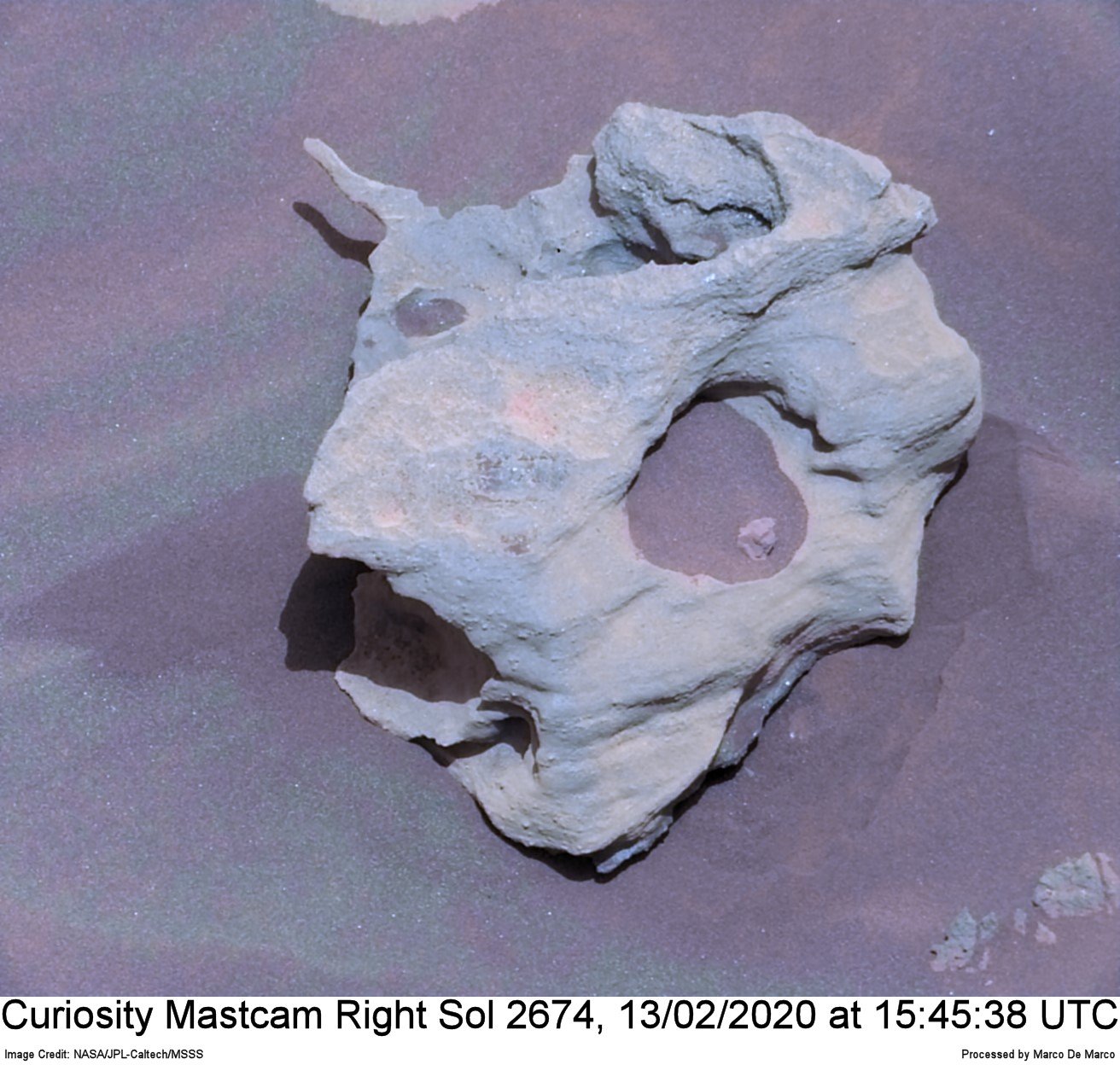
At 15:45:38 UTC the Mastcam Right has captured this rock with a very singular morphology!
If you look closely at this rock, you will notice that it is formed by thin overlapping layers; it should be a sedimentary rock like many others already shown in this page, but this is not so!
In fact, the common sedimentary rocks show themselves as slabs more or less eroded, but in this case you can see a very complex morphology with large cavities almost circular, almost hemispherical concavities, surface roughness anything but eroded and a beautiful long and thin spike.
Does all this seem “normal”?
What “geological” phenomenon could generate such complexity?
Not to mention the color variations visible on the surrounding terrain; could those “chalky” greens really remain there for long periods without being swept away and/or covered by sandstorms?
The original image is a black and white encoding of the Bayer mask that has been converted to color through a process called “debayering” or “demosaicing”. In addition, the photo has undergone a reduction in noise due to Jpeg compression, white balance and a slight increase in microcontrast and color saturation in order to make the colors more similar to what the human eye would see.
Original image: https://mars.jpl.nasa.gov/msl-raw-images/msss/02674/mcam/2674MR0140140010804482C00_DXXX.jpg
This post has been automatically translated. See the original post here.